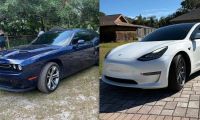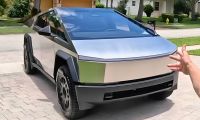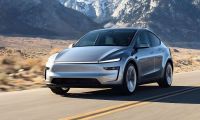Many of those sources indicate that this factory will be located near the facilities of the new Tesla plant in Texas, and apparently will also be responsible for producing what they call "a new type of battery". They are most possibly referring to the 4680 cells, introduced in 2020, and already being produced at the pilot plant in Kato Road, California.
Japanese electronics giant @panasonic is looking to buy land in the U.S. to build a mega factory to supply a new type of lithium-ion batteries for @Tesla, broadcaster NHK reported on Friday. pic.twitter.com/qb12FrmRtQ
— CGTN Global Business (@CGTNGlobalBiz) March 4, 2022
This endeavor would involve an investment of several billion dollars, and will allow Tesla to continue increasing the flow of batteries that feed its plants, already coming from different suppliers around the world, like CATL, BYD, LG, etc.; to which new lines will be added shortly from Panasonic, which is preparing production at its factory in Wakayama, Japan, to start operating in 2024 to produce 4680 cells.

Let's remember that way back in January 2010, Tesla and Panasonic announced that they would together develop nickel-based lithium-ion battery cells for electric vehicles. The partnership was part of Panasonic's $1 billion investment over three years in facilities for lithium-ion cell research, development and production. Beginning in 2010, Panasonic invested $30 million for a multi-year collaboration on new battery cells designed specifically for electric vehicles. In July 2014, Panasonic reached a basic agreement with Tesla to participate in battery production at Giga Nevada.
Tesla and Panasonic also collaborated on the manufacturing and production of photovoltaic (PV) cells and modules at the Giga New York factory in Buffalo, New York. The partnership started in mid-2017 and ended in early 2020, before Panasonic exited the solar business entirely in January 2021.
Panasonic plans to build a U.S. factory to supply Tesla with lithium-ion batteries, according to Japanese national broadcaster NHK https://t.co/IW9ep21HFD
Advertising — Bloomberg Green (@climate) March 4, 2022
According to Tesla estimates, the 4680 cells will increase the autonomy of its electric cars by 16% and reduce costs by 14%. Its patented 'tabless electrode' design will also eliminate the tabs used on the cathode and anode to connect to the housing terminals, simplifying cell production and improving cell performance.
Panasonic is Looking to Purchase Land in the U.S. to Build a 'Mega-Factory' to Produce EV Batteries for Tesla - https://t.co/ldM0RB3ak3 #Tesla #Panasonic #EVs #batteries via @FutureCar_Media https://t.co/qXWbTysWDE
— FutureCar (@FutureCar_Media) March 4, 2022
This format will also allow much faster and more efficient manufacturing: each of the new production lines will be able to reach a 20 GWh/year capacity, an improvement of up to seven times as compared to current processes. This will entail a 75% reduction in investment per GWh produced and will make it possible to create Terafactories smaller in size than the current Gigafactories (up to 10 times smaller per GWh). These batteries will also allow Tesla to carry out the projects it still has in the pipeline, such as the Semi electric truck, the Cybertruck, and maybe even the Roadster.
Image courtesy of Tesla Inc.
Nico Caballero is the VP of Finance of Cogency Power, specializing in solar energy. He also holds a Diploma in Electric Cars from Delft University of Technology in the Netherlands, and enjoys doing research about Tesla and EV batteries. He can be reached at @NicoTorqueNews on Twitter. Nico covers Tesla and electric vehicle latest happenings at Torque News.












